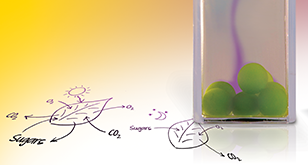
Use microbes to investigate biological processes and pathways with these convenient, reliable kits that spark imagination and bring abstract concepts into focus.
Category Products
- Image
 Photosynthesis and Cellular Respiration Kit for AP Biology
Photosynthesis and Cellular Respiration Kit for AP BiologyExplore both photosynthesis and cellular respiration using algae beads and a simple colorimetric assay. Curriculum includes structured, guided, and open inquiry investigations that cover Big Idea 2.
- Image
 Photosynthesis and Cellular Respiration Kit for General Biology
Photosynthesis and Cellular Respiration Kit for General BiologyExplore both photosynthesis and cellular respiration using algae beads in a simple colorimetric assay. Includes materials and curriculum for 24 student workstations.
- Image
 C. elegans Behavior Kit
C. elegans Behavior KitCompare a wild-type strain of C. elegans to a neurologic mutant to understand how a loss of the AIY and ASE neurons impacts learning capacity through a chemotaxis experiment.
- Image
 Microbes and Health Kit
Microbes and Health KitThe chemistry of the bacterial cell is brought into focus in this laboratory kit, as students examine bacteria and their interaction with the environment.




